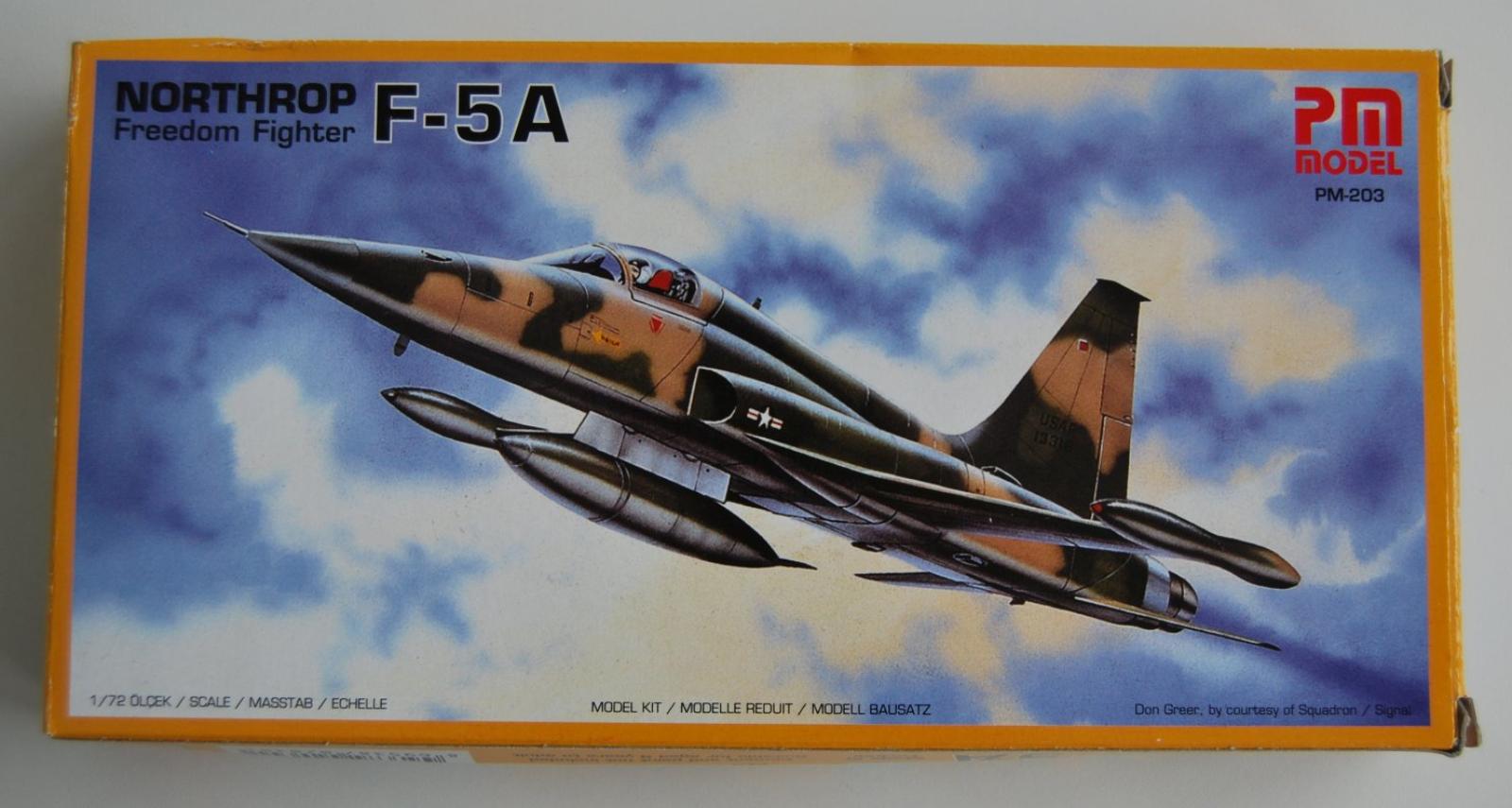Manufacturer: PM-Model
Scale: 1/72
Additional parts: from the spare part box
Model build: Jun 2012

Manufacturer: PM-Model
Scale: 1/72
Additional parts: from the spare part box
Model build: Jun 2012
Captain Erich Hartmann gripped the control stick, his knuckles white. Below him, the tapestry of the West German countryside blurred into a nervous green and brown. Today wasn't a training exercise. Today, he and his wingman, Lieutenant Mayer, were on a live mission – their first air-policing sortie in their brand new F-5L Tigers.
The Cold War tension hung heavy in the cockpit. A routine radar blip near the border had escalated to a confirmed unidentified aircraft. Orders were clear: intercept and identify.
"Bandit on radar, Captain," Mayer's voice crackled through the intercom. "Heading south, unidentified type."
Erich's heart pounded a military rhythm against his ribs. He flicked on a switch, activating the upgraded radar in his F-5L. The blip solidified on the screen, growing larger with each passing second. It was fast. Faster than anything they were used to.
"Looks like a MiG-25," Mayer confirmed, a hint of awe in his voice.
The MiG-25, the notorious "Foxbat," was a Soviet interceptor, a symbol of their technological prowess. It was faster than anything in the West German arsenal, a ghost that could dance through their airspace at will.
"Maintain visual contact," Erich ordered, his voice betraying none of the apprehension he felt. "No hostile intent shown yet."
They closed in on the sleek, angular silhouette of the MiG. The tension in the cockpit grew thicker than the condensation forming on the canopy. The Foxbat mirrored their maneuvers, a silent predator toying with its prey.
Suddenly, the MiG banked sharply, accelerating with a burst of flame from its engines. Erich cursed. The Foxbat was testing them, pushing their limits.
"He's heading for the border," Mayer warned.
Erich knew the consequences. Crossing the border could be seen as an act of aggression. But letting the MiG disappear without identification was a failure they couldn't afford. He had a decision to make.
"We follow him," Erich declared, pushing the F-5L to its limits. The sleek fighter strained under the g-forces, but they held their own.
The chase was a blur of speed and tension. They skimmed the treetops, the air itself humming with danger. Just as they neared the border, a voice crackled through the intercom. It was scrambled, but unmistakable – a frantic plea from the MiG pilot in broken English: "Defector… Requesting asylum…"
Everything changed. Erich hesitated, then banked away from the border, leading the MiG towards a pre-designated landing strip. Adrenaline surged through him – this wasn't just an air-policing mission anymore. This was a potential turning point in the Cold War.
They landed safely, the German airbase swarming with activity. Erich and Mayer watched from their cockpits as officials approached the defecting MiG pilot. A nervous smile played on Erich's lips. They hadn't just completed an air-policing mission; they had played a part in history, their nimble F-5L proving its worth in the heart of the Cold War. The skies might still be tense, but for today, they had made a difference.

By the late 1970s, the Fiat G.91 was nearing obsolescence as the Luftwaffe’s primary close air support (CAS) aircraft. With the need for a replacement, the Luftwaffe evaluated several candidates. The decision was made to procure an upgraded variant of the Northrop F-5A Freedom Fighter, designated the F-5L.
One factor that weighed heavily in the choice was familiarity: the Luftwaffe already trained many of its pilots in the United States using the Northrop T-38 Talon. The F-5L promised continuity in training and logistics, as well as NATO-standard compatibility.
The F-5L retained the basic airframe of the F-5A but incorporated several key changes. The aircraft was delivered without wingtip fuel tanks, improving aerodynamic agility at the expense of range. In compensation, the type was equipped with modernized avionics, including upgraded navigation and ground-attack systems suited for the CAS role. The F-5L was designed for a dual mission profile:
The first deliveries took place in 1982, and by the mid-1980s, the F-5L had entered service with several units:
A total of 175 aircraft were procured, making the F-5L a significant component of the Luftwaffe’s strike force during the final decade of the Cold War.
Although effective in its intended role, the aircraft was a stopgap solution. Its range limitations and lack of advanced strike capability meant that it could not match the performance of the forthcoming Panavia Tornado IDS. Still, the F-5L was appreciated by its pilots for its handling characteristics, agility, and reliability.
The German reunification in 1990 brought with it large-scale reductions in the Luftwaffe. As part of this restructuring, the F-5L fleet was retired in the early 1990s after less than a decade of frontline service.
Most surviving airframes were resold to other NATO partners.
Though short-lived in German service, the F-5L program represented an important transitional step. It bridged the gap between the aging Fiat G.91 and the advanced Tornado, while simultaneously strengthening ties with NATO allies through the resale of surplus aircraft. The F-5L thus played a modest but notable role in the Luftwaffe’s late Cold War arsenal.

The kit is a 1/72 sclae PM-Model, which is very basic, just about 20 parts. I added some additional pylons with bombs to it and did not attach the wingti fuel tanks.